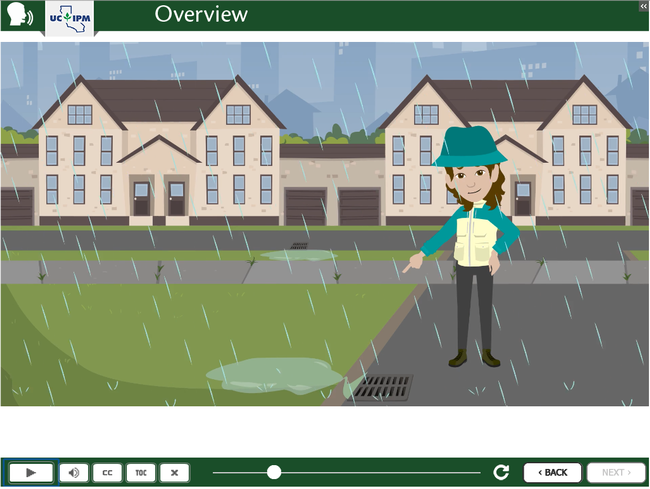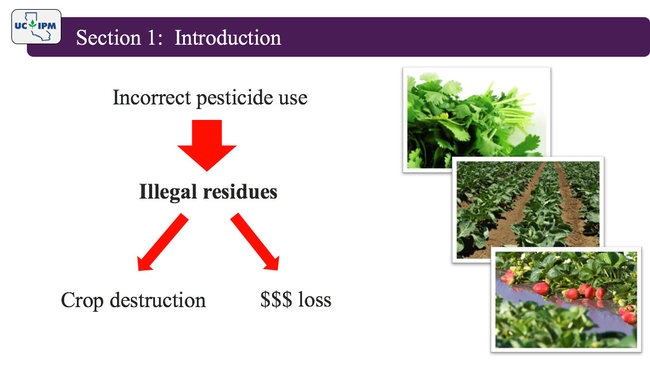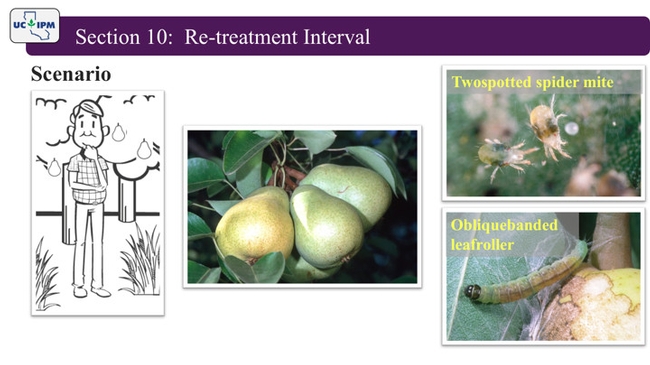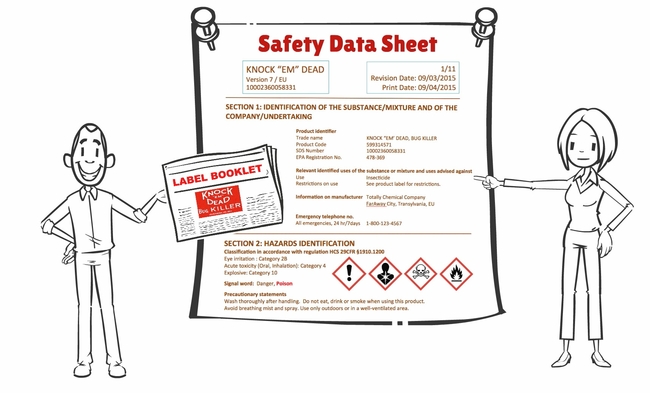Posts Tagged: pesticides
New online pesticide-use course aims to protect water quality
Do you know that some pesticides used around homes and other structures are toxic to small aquatic organisms living in nearby streams, creeks, rivers and oceans? The UC Statewide Integrated Pest Management Program has launched a new online course on runoff and surface water protection in California. This course is designed for pest management professionals working primarily in structural pest control or landscape maintenance, but residents and property managers may also find the presented information useful.
Developed by pest management experts from the California Department of Pesticide Regulation (DPR) and the University of California, this course presents information on the Surface Water Protection Regulations that are found in Title 3 of the California Code of Regulations. These regulations were put into place to prevent pesticide runoff into California waterways and to reduce surface water contamination from pyrethroid insecticide use.
In this course, you will learn about the types of pesticide applications that are allowed under the regulations, as well as application types that are prohibited and also application types that are exempt. The course takes a close look at pyrethroids, particularly bifenthrin because of its high use in urban areas, high detection in surface waters, and high toxicity to aquatic organisms. Fipronil, another commonly used ingredient in structural and landscape products, is addressed in the course as well because it causes similar water-quality concerns as pyrethroids. Bifenthrin is used for managing pests such as ants, crickets and lawn grubs. Fipronil is used for ants, roaches and termites.
The Urban Pyrethroid and Fipronil Use: Runoff and Surface Water Protection course has been approved by DPR for a total of 1.5 continuing education units, including 0.5 hour of Pesticide Laws and Regulations and 1.0 hour of Other and by the Structural Pest Control Board for 1.5 hours of Rules and Regulations.
The course takes about 90 minutes to complete. It is divided up into seven sections so a person can stop and resume where they left off. The course is free. To take the course, people need to set up an account at https://campus.extension.org/ then they can enroll. The direct link to the course is https://campus.extension.org/course/view.php?id=2221.
UC IPM currently offers 22 online courses with continuing education units from DPR. Many of these courses are also credited by the California Structural Pest Control Board, Certified Crop Adviser, the Western Chapter of the International Society of Arboriculture, and the Arizona Department of Agriculture.
That Milkweed You Buy at Retail Nurseries May Contain Pesticides
It's Sept. 4, 2019. We notice a monarch butterfly laying eggs on milkweed in an enclosed Vacaville retail nursery. We purchase the plant and add...
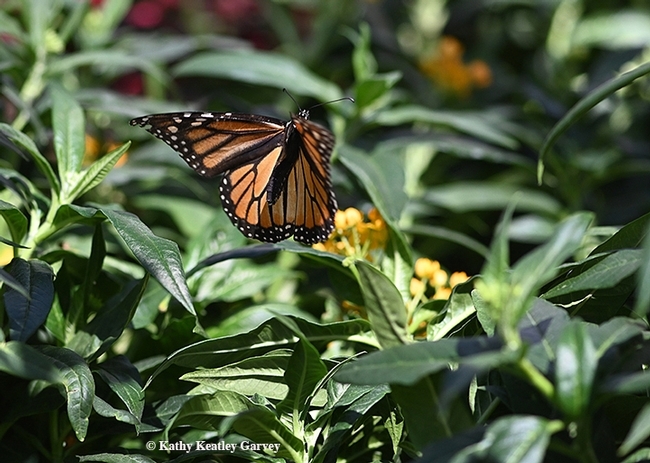
A monarch laying eggs in a Vacaville retail nursery on Sept. 4, 2019. (Photo by Kathy Keatley Garvey)
Scott McArt: The Risk of Pesticides to Pollinators
"The use of synthetic chemical pesticides is central to current agricultural practices worldwide. But what is the cost to wildlife via...
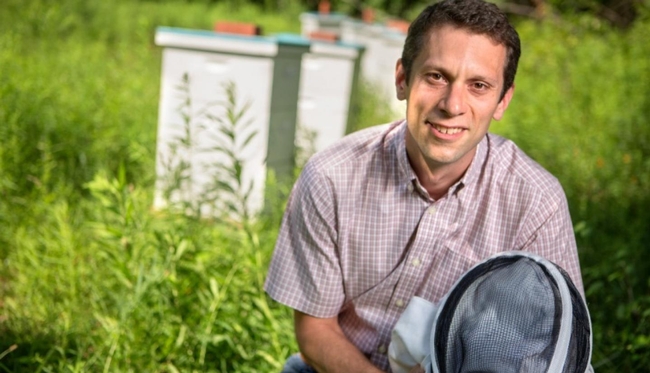
Scott McArt of Cornell will speak on "Pesticide Risk to Pollinators: What We Know and What We Need to Know Better" at the Wednesday, May 4 virtual seminar hosted by the UC Davis Department of Entomology and Nematology.
New online course helps growers prevent illegal pesticide residues
Last month, a California grape farmer was fined $10,000 for using a pesticide in violation of the label, then packing and attempting to sell the tainted fruit. DPR detected the residues of a pesticide on the produced that was not registered for use on grapes.
Cases like this are rare in California but remind growers how important it is to apply pesticides correctly by following all pesticide label directions. The California Department of Pesticide Regulation (DPR) runs the most extensive Pesticide Residue Monitoring Program in the nation and is hard at work ensuring that the fruit and vegetables we purchase and consume are free from illegal pesticide residues.
Understanding and following label instructions is the focus of a new online course developed by the University of California Agriculture and Natural Resources Statewide Integrated Pest Management Program (UC IPM).
The program, Proper Pesticide Use to Avoid Illegal Residues, is targeted to those who apply pesticides or make pesticide recommendations. It explains what pesticide residues are, how they are monitored, and highlights important residue-related information from several sections of pesticide labels. In addition, the course identifies the following as the most important factors leading to illegal residues:
- Using a pesticide on a crop for which it is not registered
- Applying pesticides at an incorrect rate
- Ignoring preharvest intervals, re-treatment intervals, or plantback restrictions
Course participants are presented with several real-life scenarios. They must search through actual pesticide labels to determine if the scenario illustrates proper use of pesticides or if the described situation could potentially lead to illegal residues.
The overall goal of this course is to have participants follow pesticide label instructions when they return to the field. Following the label can eliminate incidences of illegal pesticide use.
Proper Pesticide Use to Avoid Illegal Residues is published just in time for pest control advisers and pesticide applicators who are still a few units short to renew their licenses or certificates with DPR. The course has been approved for two hours of Pesticide Laws and Regulations continuing education units (CEUs) from DPR and costs $40. If you don't need CEUs, but are still interested in viewing the course content, check it out for free on YouTube.
DPR recommends that renewal packets be submitted before Nov. 1 in order to receive your renewed license or certificate by Dec. 31, as the processing time can take up to 60 days. For additional online courses that UC IPM offers, visit the online training page.
The Buzz About Honey Bees and Marijuana
Extension apiculturist emeritus Eric Mussen of the UC Davis Department of Entomology and Nematology, "retired" in June of 2014 after 38 years of...
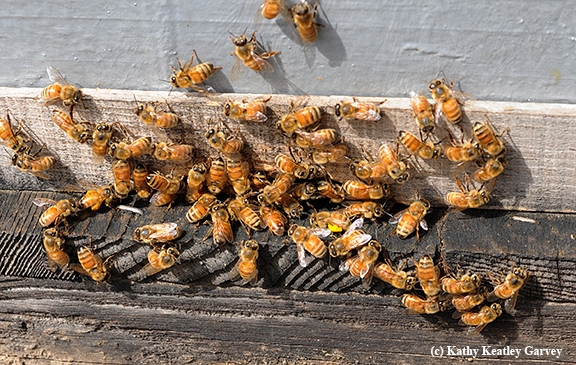
Honey bees laden with pollen returning to their colony. (Photo by Kathy Keatley Garvey)


